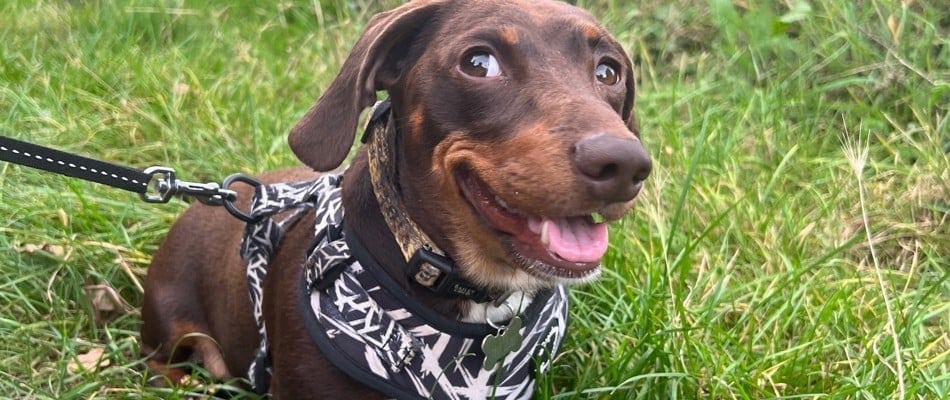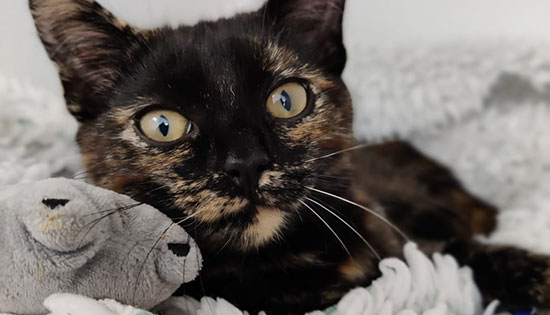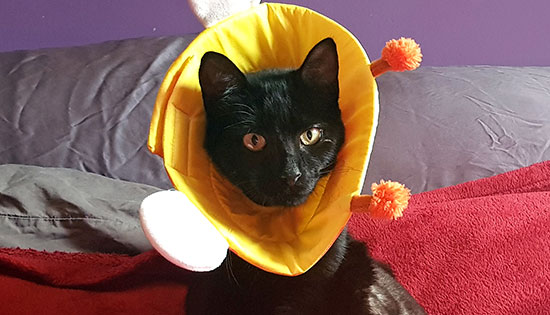Case summary
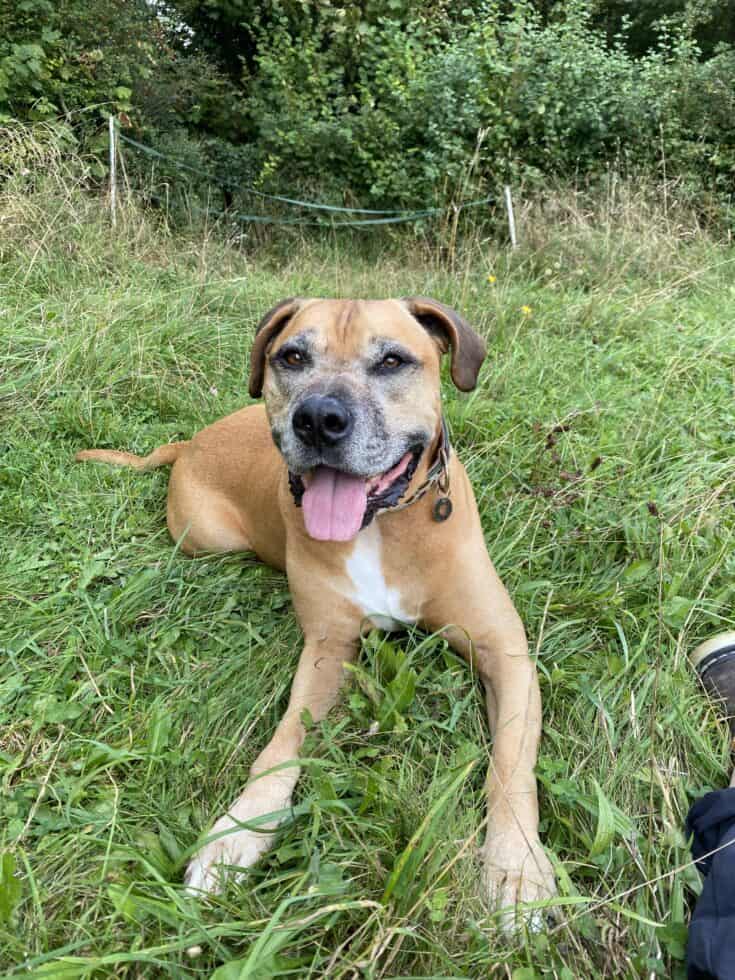 Ernie, a 10-year-old dog, was brought into to Lumbry Park Internal Medicine Department with a short history of vomiting. He had been seen eating something earlier in the day and had a history of eating things he shouldn’t, including tennis balls which he had removed as a younger dog. On arrival he was very uncomfortable, having difficulty breathing and retching occasionally.
Ernie, a 10-year-old dog, was brought into to Lumbry Park Internal Medicine Department with a short history of vomiting. He had been seen eating something earlier in the day and had a history of eating things he shouldn’t, including tennis balls which he had removed as a younger dog. On arrival he was very uncomfortable, having difficulty breathing and retching occasionally.
The Diagnostic Imaging team performed a CT scan to determine the cause of Ernie’s symptoms, and upon examination a foreign body, identified as a tennis ball, was discovered in Ernie’s food pipe (oesophagus). The ball appeared intact, albeit squashed, and firmly lodged in Ernie’s throat.
Due to the size of the ball and how much of the passageway was blocked, removal would be difficult. The original plan was to push the ball into the stomach and remove it with surgery. However, after several attempts, the ball couldn’t be moved downwards. Taking a different approach, a stomach tube was carefully passed beyond the ball and used to pull the ball upwards towards the mouth. Forceps were then used to remove the ball.
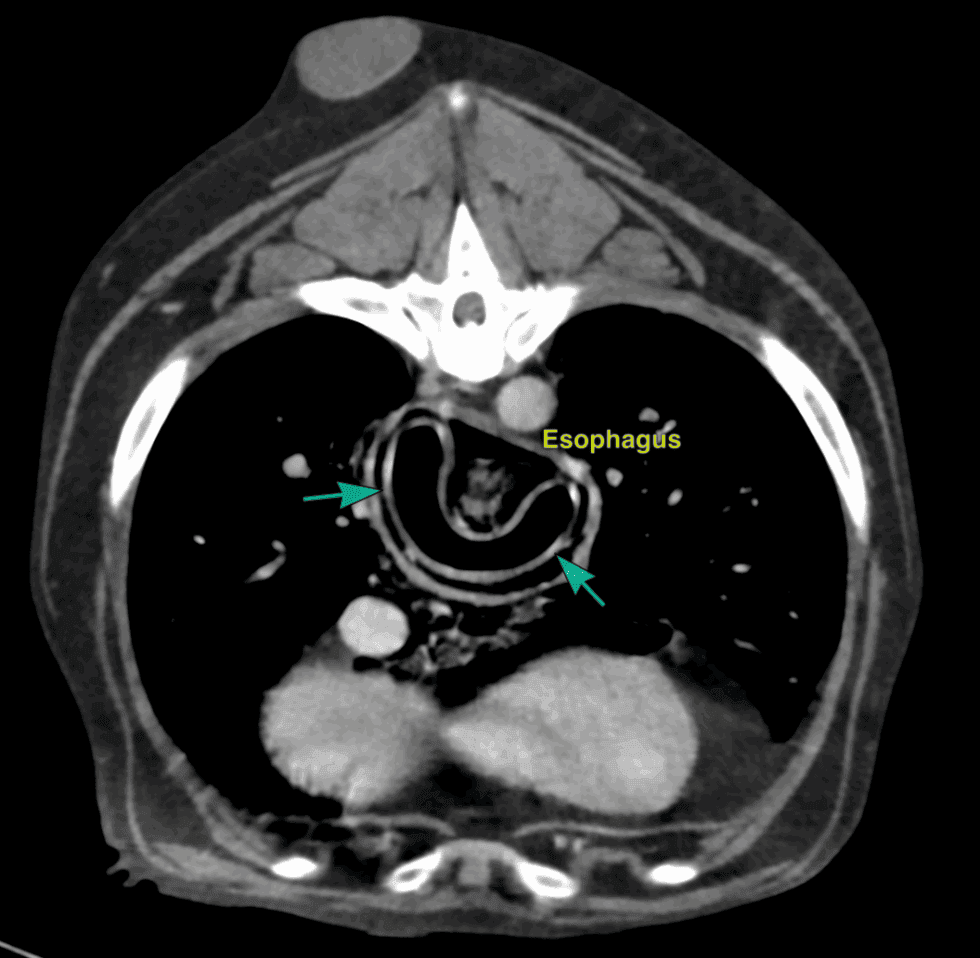
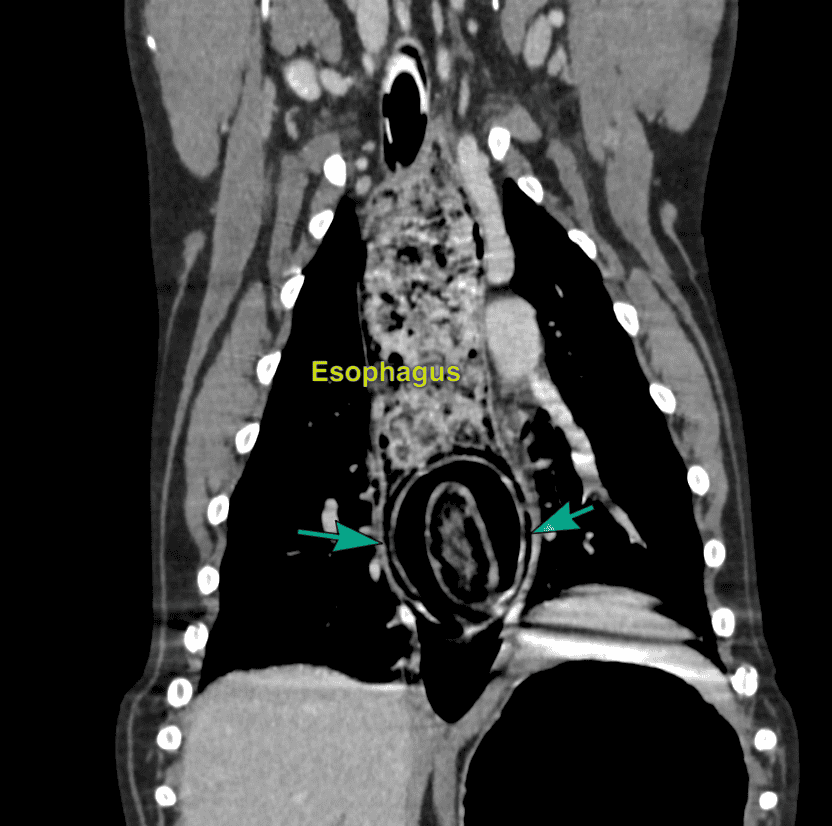
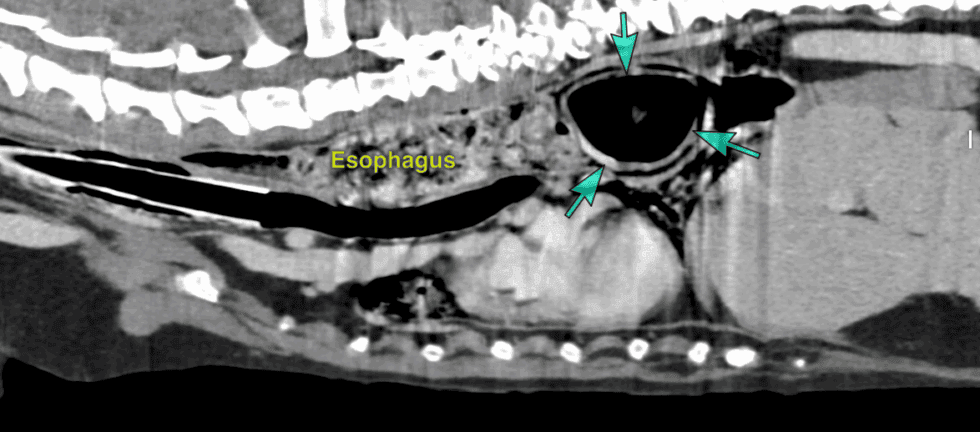
The team were concerned that damage or a tear in the oesophagus could lead to scarring or narrowing, which might cause ongoing health issues for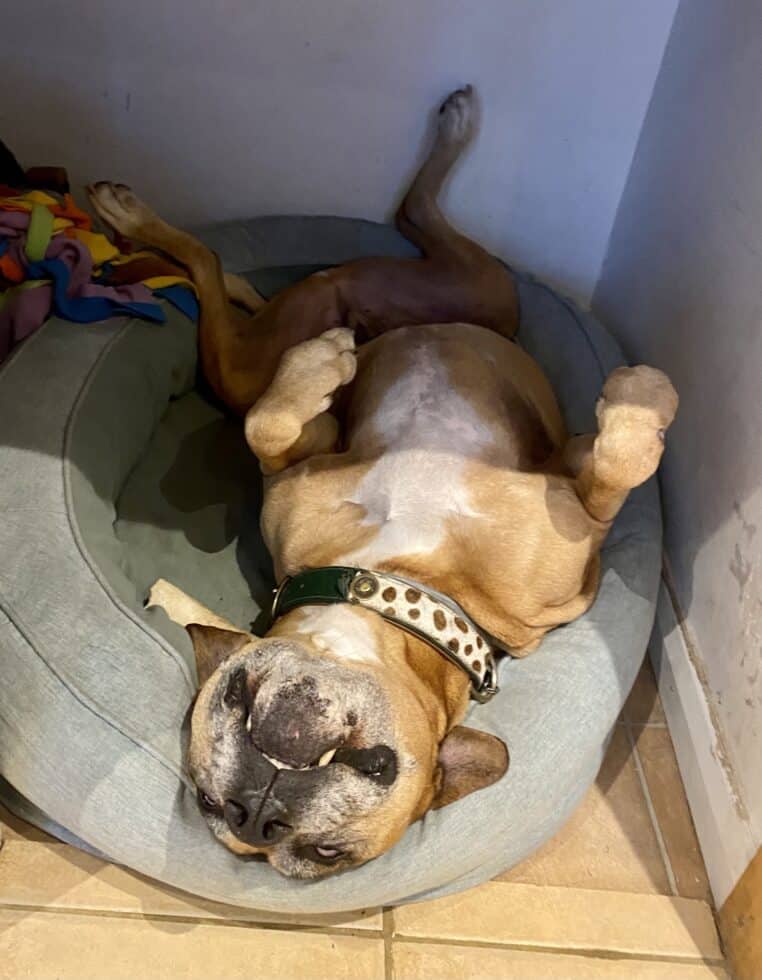 Ernie if not properly treated.
Ernie if not properly treated.
Thankfully, as the oesophagus had only been blocked for a relatively short time period, there was only mild inflammation. Staff used an endoscope to examine Ernie’s stomach to ensure that all of the ball was extracted, only to find an assortment of other foreign objects, such as leaves and food wrappers. All harmful plastics were removed safely from Ernie’s stomach, and Ernie recovered from anaesthesia with no complications. He was given painkillers and medication to settle his stomach, and his appetite returned quickly.
Patient issue and summary:
Foreign bodies are a common issue as dogs do tend to eat some unusual things. Oesophageal foreign bodies cause concern due to the potential challenges removing them, as well as damage to the oesophagus that could occur. Perforation/tearing of the oesophagus is extremely serious and can be fatal. To try and prevent your dog eating things they shouldn’t, walking them on a lead can help you to monitor their behavior and keep them away from hazardous objects, as well as using a muzzle if necessary. Behavioural modification may also help to try and break this habit. If your dog has other signs of gastrointestinal problems (vomiting/diarrhoea), they can be checked for underlying gut issues that could drive them to eat non-food items.
Examination/diagnosis:
In cases with suspected foreign bodies, it is important to image the oesophagus as well as the stomach/small intestines to get a complete assessment of the issue, and presenting signs can be similar with owners not distinguishing between vomiting and retching/regurgitation.
Treatment:
In this case, a combination of disciplines were involved. The imaging department identified the problem, internal medicine passed a camera to look for the ball and remove the gastric foreign bodies, surgery were on standby to operate as needed, and in the end, working together, surgery and medicine specialists were able to remove the obstruction.
Outcome/recovery:
Ernie went home the next day, looking like nothing had happened and hungry as ever. Due to his owners taking him to the vets promptly, and importantly the primary care practice referring him quickly, he made a full recovery with no complications. If the tennis ball had been there longer, it is likely the oesophagus would have been damaged severely with a much more guarded prognosis.
Quotes: Ernie’s owners report he is now back to his normal self, and they are keeping him well away from tennis balls!


